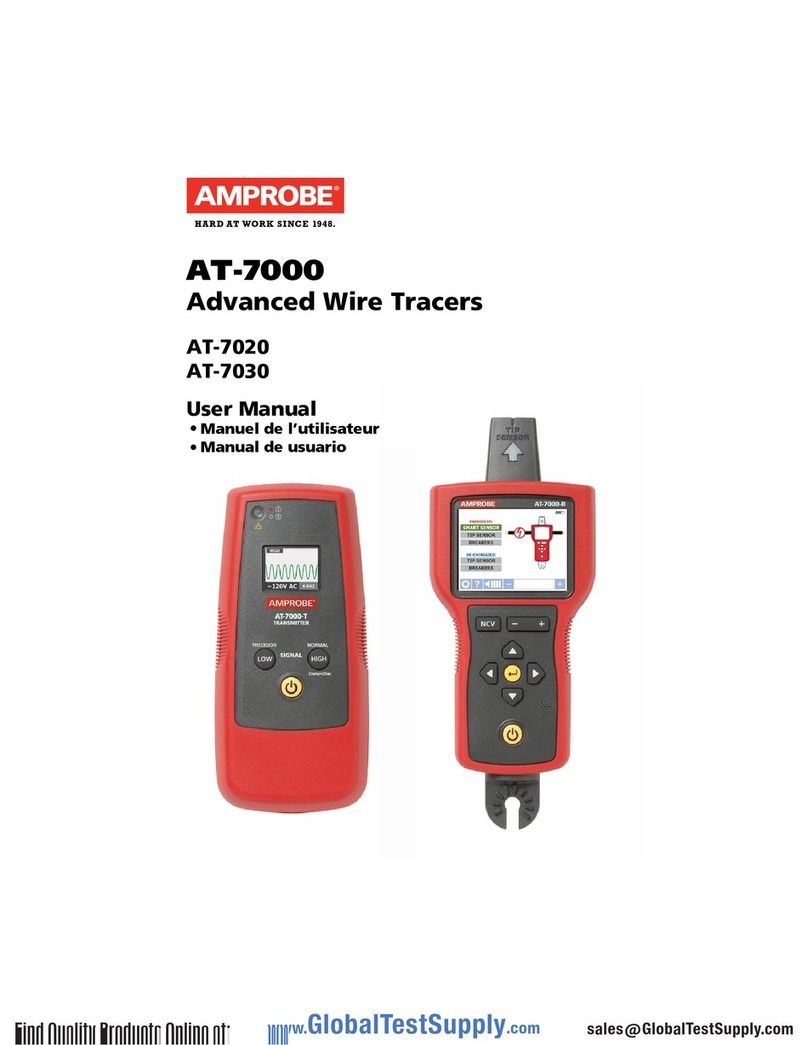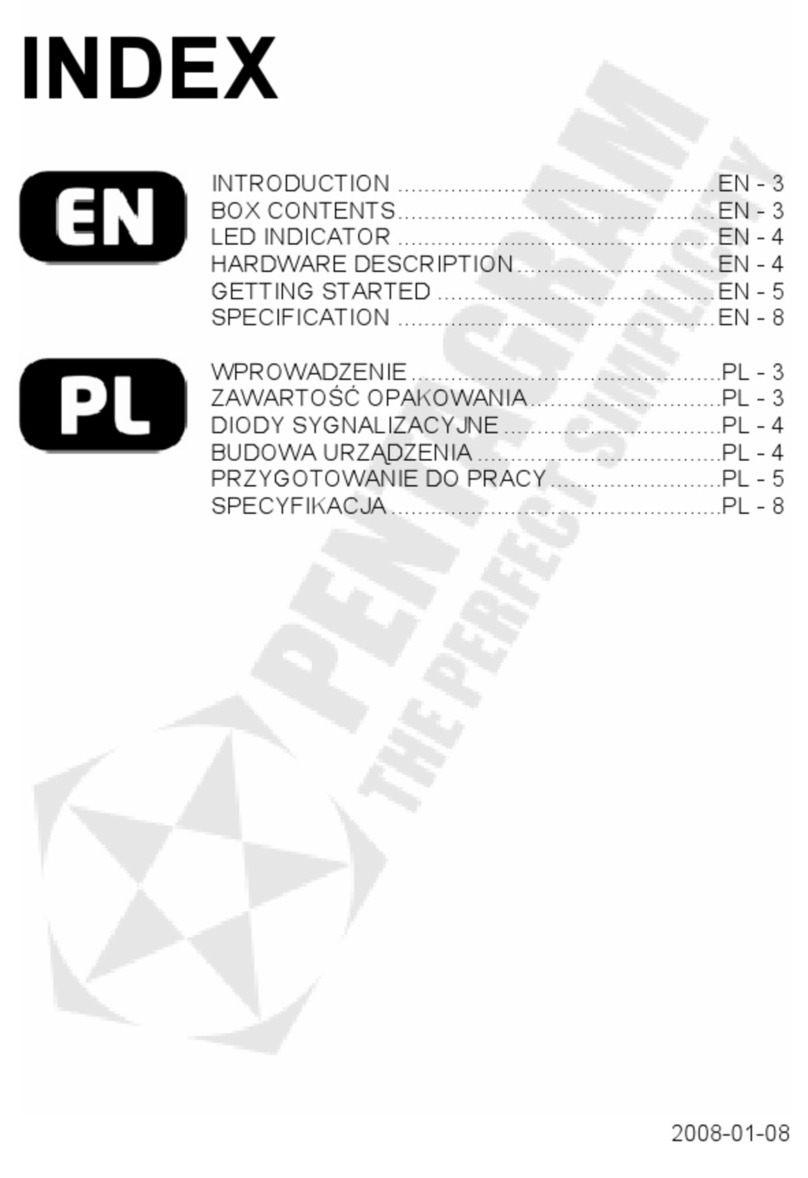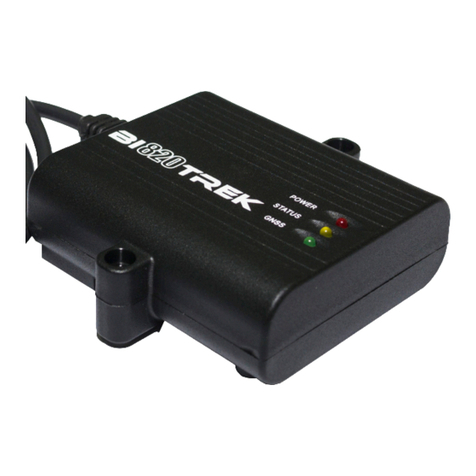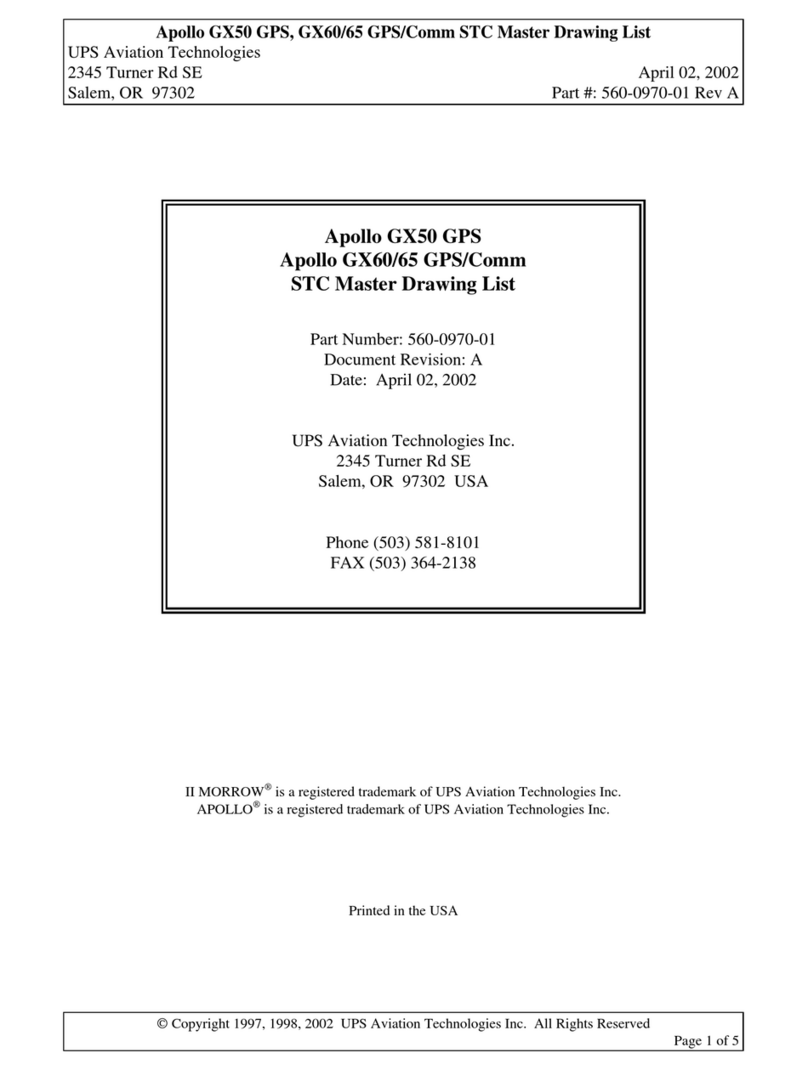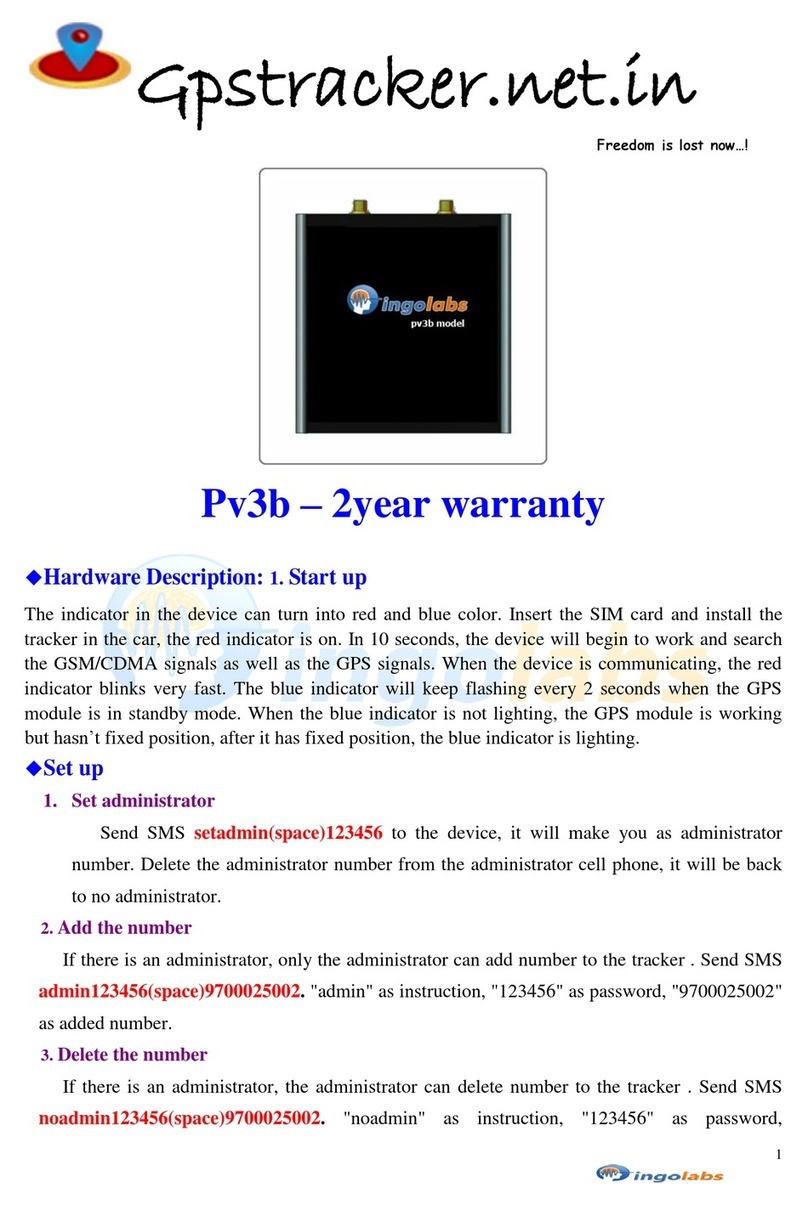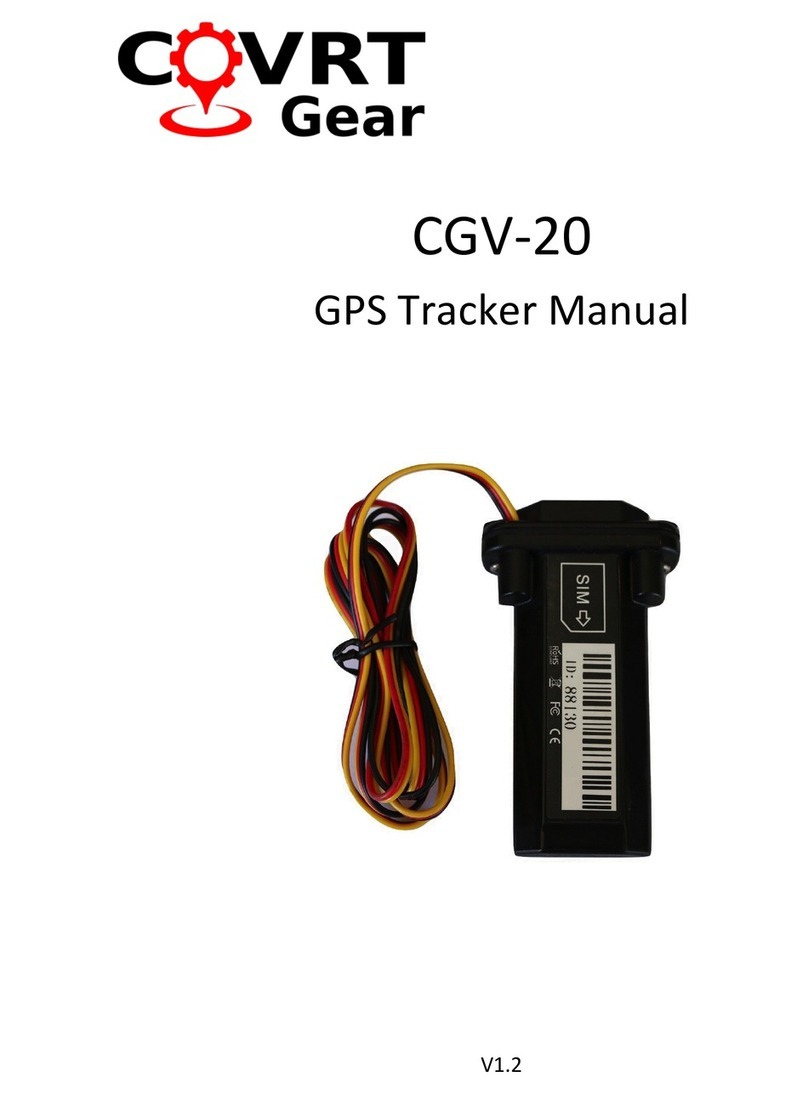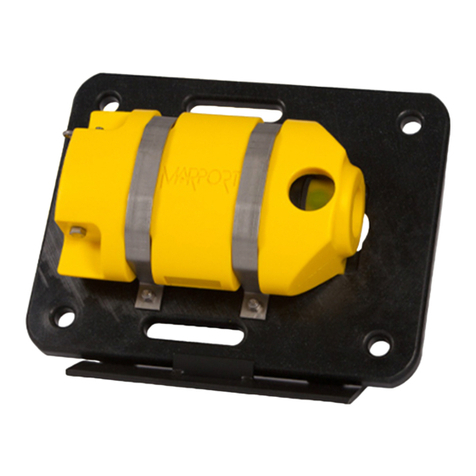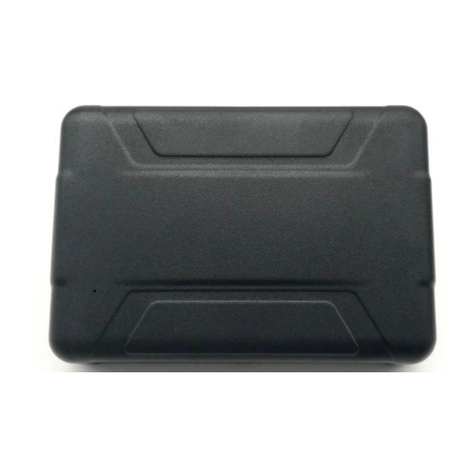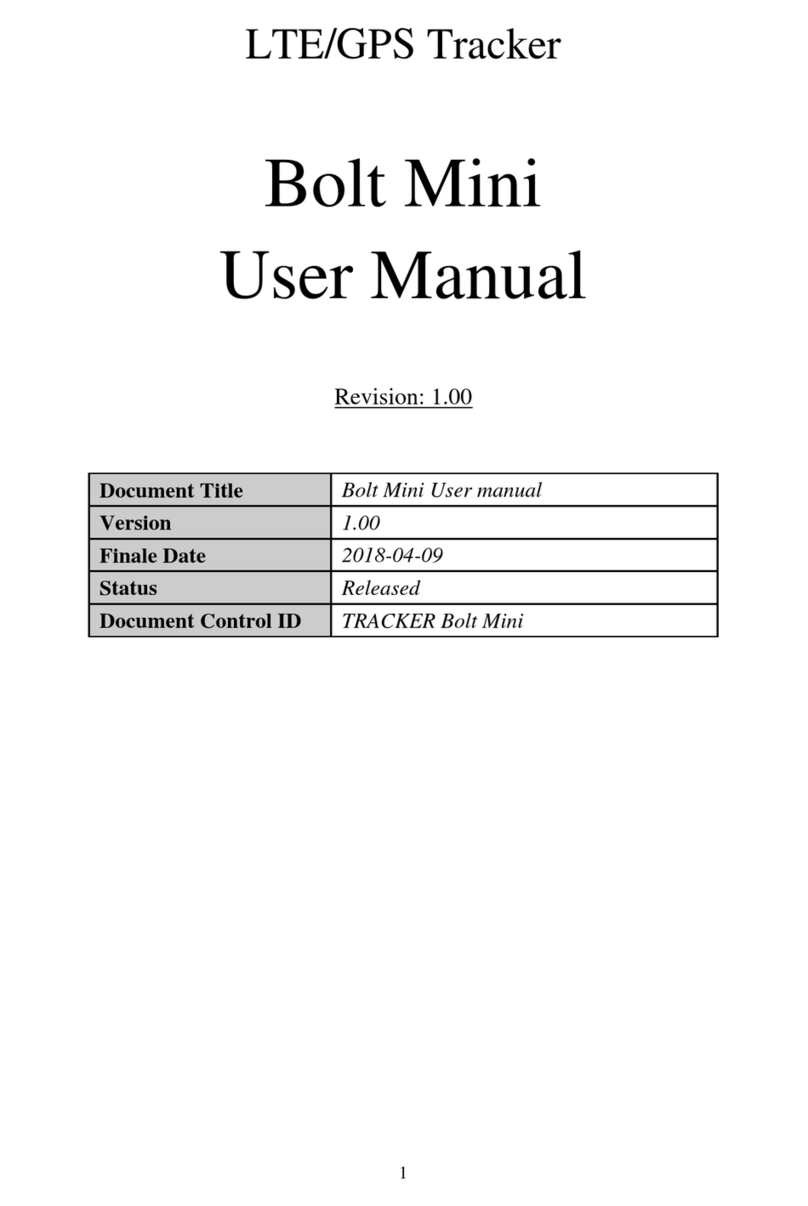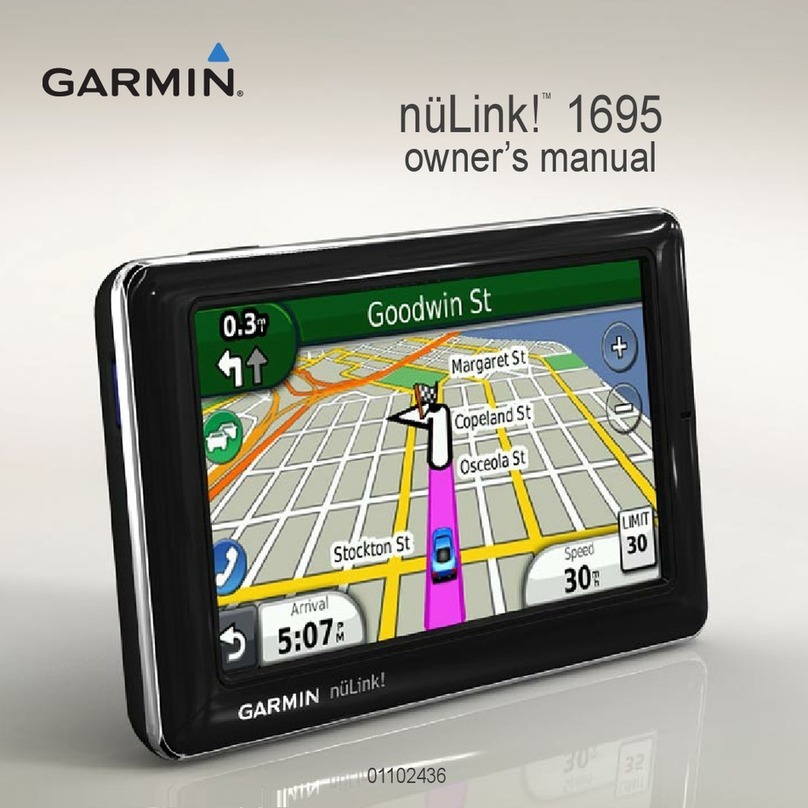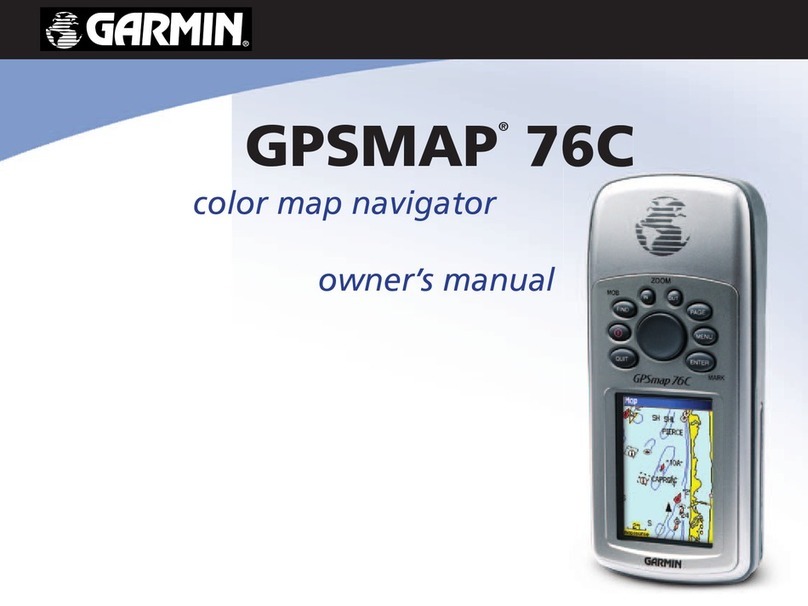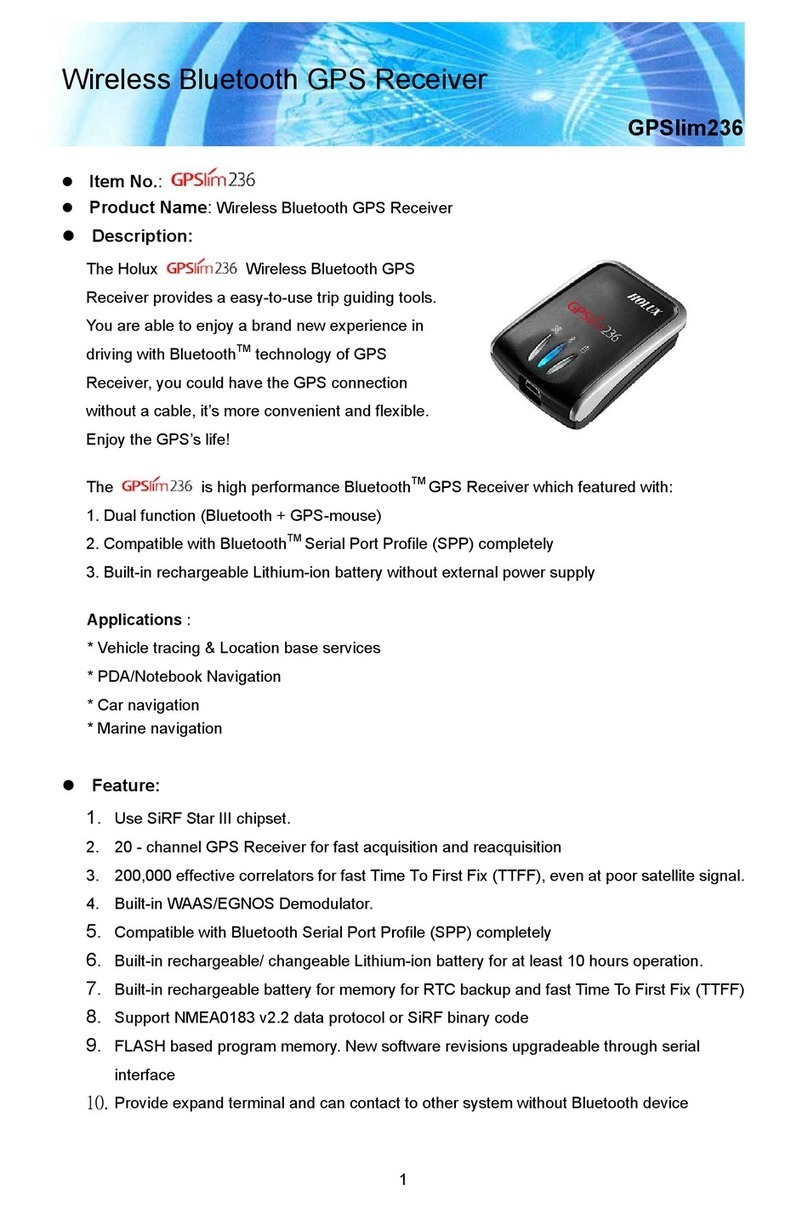TripSpark Ranger 7-RNGR-04X Manual

HARDWARE INSTALLATION GUIDE
Ranger 7-RNGR-04X
VERSION 5.5
JULY 2014

2
Copyright © 2016 TripSpark Technologies, its subsidiaries and affiliates. All rights reserved.
Hardware Installation Guide : Ranger 7-RNGR-04X
July 2014 Edition
This edition is based on product version 5.5.
Adobe Reader® is a registered trademark/trademark of Adobe Systems Incorporated in the United
States and other countries. Microsoft® Windows® and Microsoft® Word are registered
trademarks/trademarks of Microsoft Corporation in the United States and/in other countries.
TripSpark Software ULC dba as TripSpark Technologies reserves the right, to be exercised at its sole
discretion and without notice, to change, modify or adapt the contents of this edition in order to
accurately reflect any future upgrades to the TripSpark proprietary software. In the event of such
changes, TripSpark expects, but does not represent or guarantee, that this current edition will continue
to remain reasonably accurate insofar as it describes the basic functions of the TripSpark proprietary
software. Furthermore, depending on your system settings, certain functionality, such as application
screens, may not function exactly as shown or described in this document.
TripSpark Proprietary and Confidential: Information contained in this document is proprietary to
TripSpark, and may be used or disclosed only with written permission from TripSpark. This guide, or any
part thereof, may not be reproduced without the prior written permission of TripSpark. The recipient
acknowledges and agrees that disclosure of this document to recipient, and its use, are subject to the
terms and conditions specified in their relevant software license Agreement, software maintenance
agreement, and/or nondisclosure agreement. This document is for internal use only in conjunction with
TripSpark products. This document may not be modified in any way.
TripSpark, and any other trademarks used herein (except third party trademarks, as applicable), whether
registered or not, are the property of TripSpark. No rights therein are granted to recipient.
Revision History
Date
Topic or Section
Feature Description
February 2015
Full Document
Template Re-design
September 2016
Updated copyright notifications

3
Copyright © 2016 TripSpark Technologies, its subsidiaries and affiliates. All rights reserved.
Contents
**** Warning ****............................................................................................................................. 5
Safety & After-Market Equipment .....................................................................................................5
Qualified Installer.......................................................................................................................................... 5
Introduction ..................................................................................................................................................7
Before you Begin........................................................................................................................................... 7
Cautions ...........................................................................................................................................7
TOUCH PANEL CARE AND CLEANING...............................................................................................8
Mounting Locations ....................................................................................................................................11
Placement ......................................................................................................................................11
Installing the Ranger Cover Plate................................................................................................................12
SUPPLIES REQUIRED TO INSTALL COVER .......................................................................................12
Connection Points..........................................................................................................................17
Splicing ................................................................................................................................................17
Power ..................................................................................................................................................18
Ground ................................................................................................................................................18
Switched Ignition Power .....................................................................................................................18
Emergency Switch (optional ) .............................................................................................................19
Routing...........................................................................................................................................20
Strain Relief....................................................................................................................................20
Labeling.......................................................................................................................................... 21
Connection Types...........................................................................................................................21
Acceptable Connection Types.............................................................................................................21
Unacceptable Connection Types.........................................................................................................21
Wire Types .....................................................................................................................................21
Electrical Measurements ...............................................................................................................22
Antennas .....................................................................................................................................................22
Internal antennas...........................................................................................................................22
External antennas ..........................................................................................................................22
Cable Routing.................................................................................................................................23
CONNECTORS......................................................................................................................................23
General Description ............................................................................................................................23

4
Copyright © 2016 TripSpark Technologies, its subsidiaries and affiliates. All rights reserved.
Compliance and testing ......................................................................................................................24
Optional Features ...............................................................................................................................24
Key Specifications ...............................................................................................................................24
Appendix A Conformity...............................................................................................................................26
1. FCC Class B Part 15...................................................................................................................... 26
Industry Canada Statement ...........................................................................................................26
2. IEC 60950 3rd Edition (2000) Safety of Information Technology Equipment.................................27
3. ISO 7637-1 Load Dump Transient ...................................................................................................27
4. MIL STD 810F: General Vibration.................................................................................................... 27
5. MIL STD 810F: Shock Test ...............................................................................................................27
6. IEC 60529 - IP54 ..............................................................................................................................27
Appendix B RF Radiation Specs...................................................................................................................28
RF Exposure....................................................................................................................................28
Appendix C Approvals.................................................................................................................................28
1. cdma/evDO - VOICE/DATA NETWORK CERTIFICATIONS.................................................................28
2. GSM/HSPA.......................................................................................................................................28
3. WIFI/Bluetooth only - No cellular modem......................................................................................28

5
Copyright © 2016 TripSpark Technologies, its subsidiaries and affiliates. All rights reserved.
**** WARNING ****
Failure to install the equipment as recommended could cause or contribute to an accident and result in
damage to property or persons.
This product is to be installed by qualified installation personnel only. Incorrect installation may result in
FIRE or contribute to an ACCIDENT.
Safety & After-Market Equipment
The use of after-market equipment in motor vehicles can compromise a vehicle’s safety-related design
characteristics, including but not limited to:
Airbags, including but not limited to potential obstruction of airbag deployment;
Passenger compartment, including but not limited to potential for ergonomic problems, physical
obstacles, etc.; and
Trunk/gas tank protection, including but not limited to the potential for trunk-mounted
equipment to exacerbate tank vulnerability in a rear collision.
Qualified Installer
This product is to be installed by qualified installation personnel only. Incorrect installation may result in
fire or contribute to an accident. The installer must be trained in industry best practices for this type of
installation. The training would include but not be limited to:
The appropriate methods for installing cables such that:
The operation of the vehicle is not interfered with.
The installation process does not damage or interfere with other vehicle components
and/or systems.
Wiring is kept clear of sharp objects, sources of heat and any other hazard that could
damage the cable or wire.
Wiring is secured such that it does not cause damage to other equipment, itself, or interfere
with the operation of other systems and devices.
Wiring through bulkheads is performed such that wiring does not chafe, and a seal is
maintained between compartments.
Appropriate and industry standard fasteners, splices, connectors and ties are used for the
vehicle environment.
Appropriate slack is in place to prevent straining of the wire, cable or connectors.
Any other issue that could affect the integrity of the wiring or the safe operation of the
vehicle is addressed appropriately.

6
Copyright © 2016 TripSpark Technologies, its subsidiaries and affiliates. All rights reserved.
The appropriate methods for mounting equipment in vehicles such that:
The safe operation of the vehicle is not interfered with.
The equipment is attached to the vehicle as securely as possible to minimize the risk of the
equipment breaking free in an accident situation.
The installed device does not interfere with the deployment of air bags.
The installed device does not obscure displays or interfere with the ability of the driver to
operate other vehicle systems and components.
The installation process does not damage other vehicle systems or components.
Compartments remain sealed against the elements.
The correct use and operation of the required tools.
Further:
The installer must have the ability to read, understand and follow the instructions in the
installation manual.
The installer must be equipped with the correct tools for performing each installation
operation.
*The Customer must ensure that the installation of all equipment provided for this project is
safe, used for its intended purpose, and is in continual accordance with all applicable codes,
rules, regulations and guidelines provided by motor vehicle and equipment manufacturers, as
well as any state, local or jurisdictional bodies.

7
Copyright © 2016 TripSpark Technologies, its subsidiaries and affiliates. All rights reserved.
Introduction
TripSpark Ranger v4.0 is a Windows CE fixed-mount computer for two-way wireless communication,
electronic dispatching, in-vehicle navigation, and more.
This Ranger Installation guide includes directions for successfully installing and interfacing a Ranger into
a vehicle. Specific wiring and installation procedures may change from customer to customer and should
be discussed prior to installation.
If any questions remain after reading this guide, please contact Customer Care at 1-877-411-8727 for
more information.
Before you Begin
Cautions
a. Carefully read the Installation Guide before installing this product. If anything is unclear please
contact TripSpark for support.
b. Ensure that the NEGATIVE battery connection is disconnected before beginning work.
NOTE: Some components may lose short-term memory (i.e. engine or transmission adaptive
parameters, and radio presets) after a protracted time without battery power.
c. Ranger should be serviced by qualified, trained personnel only. Attempting to remove the cover
or disassemble the device could expose you to dangerous high voltage points.
d. Do not attempt to install or operate a damaged device. If the unit has been exposed to excessive
amounts of water; shows evidence of physical damage; or is not operating properly; unplug it
from the power source and contact qualified service personnel.

8
Copyright © 2016 TripSpark Technologies, its subsidiaries and affiliates. All rights reserved.
e. Use of thread-locking compounds such as Loctite may cause serious damage to plastic
enclosures. Many thread-locking compounds are not compatible with thermoplastics and can
lead to stress cracking. This will require the unit to be returned to replace the ABS enclosures.
TOUCH PANEL CARE AND CLEANING
Do not use high-pressure air, water or steam to clean the surface of the touch panel. The action
may cause the touch panel to malfunction.
Clean the touch panel surface with a dry soft cloth; only Alcohol or Ammonia based cleaner can
be used with caution when necessary.
Always dampen the cloth and clean the panel. Do not spray the cleaning agent on the panel
itself
The touch panel is sensitive to long term water exposure and any excess moisture should be
wiped off.
Do not apply adhesive materials to the surface of the touch panel. This can cause permanent
damage. This restriction includes stickers, tape and static screen protectors.
The use of aftermarket screen protectors is not recommended and may void the warranty of the
touch panel. A heavy duty film option is available as a manufacturing option.
Ensure that you have all of the items listed in the Parts List

9
Copyright © 2016 TripSpark Technologies, its subsidiaries and affiliates. All rights reserved.
Ranger Overview

10
Copyright © 2016 TripSpark Technologies, its subsidiaries and affiliates. All rights reserved.
Parts List
Supplied
* Please verify that you have everything that you need to complete the Ranger installation.

11
Copyright © 2016 TripSpark Technologies, its subsidiaries and affiliates. All rights reserved.
NOTE: Not all parts are provided by TripSpark.
Mounting Locations
Placement
1. Ensure that the driver’s view of the road will not be impacted.
2. Ensure that the equipment will not be in the path of any active airbags.
3. Ensure that the driver will still have access to all controls on the dash.
4. Ensure that the driver has a clear view of the terminal from the seated driving position.
5. Ensure that the terminal is within easy reach of the driver from the seated driving position.
6. Ensure that the mounting location is a solid surface. Locations that allow even small amounts of
initial movement will loosen over time.
7. Before drilling any holes or using screws, check for vehicle wiring under the carpet or behind the
instrument panel which could be pinched, cut or otherwise damaged.
8. If mounting through the floor, put body sealer over the underbody projections.
9. Stamped acorn nuts, filled with sealer, are available at most body shops for this purpose. This
will keep moisture out of the carpet and insulation and will forestall rust in this area.
10. If mounting under the instrument panel, be sure that there is no interference with proper
operation of the foot controls.
11. Inquire if the vehicle will be cleaned with a high pressure water wand. If so, ensure that all
equipment is installed somewhere that will be protected from this type of cleaning.
RANGER MOUNTING EXAMPLES:
1. Ranger Installed in an Orion II Bus
2. Ranger Installed in a Ford E-Series Cutaway

12
Copyright © 2016 TripSpark Technologies, its subsidiaries and affiliates. All rights reserved.
3. Ranger Installed in a Chevrolet 3500 Series Cutaway
Installing the Ranger Cover Plate
Supplies required to install cover
In order to install the Ranger Cover, the following items will be used. Most items are included in your
shipment of Ranger equipment:
Ranger Cover Plate
- 6mm hex head screw (Quantity 2)
- 2mm hex head screw (Quantity 2)
- Hex bit, for 2mm hex head screws
- 5/16” wrench (torque wrench preferred) **
**Not included

13
Copyright © 2016 TripSpark Technologies, its subsidiaries and affiliates. All rights reserved.
Step 1
Connect the Ranger power cable to the power input as shown.
Use 2mm screws and fasten cover.
This requires a 2mm Hex bit.
Torque main cable cover screws to
80 - 90 oz-inches (55 - 65 N-cm).
Step 2a
Align the back cover plate with the Ranger as shown.

14
Copyright © 2016 TripSpark Technologies, its subsidiaries and affiliates. All rights reserved.
Step 2b
If there are external cables connected to the Ranger, ensure to thread the cables through the holes in
the cover.
The cables must be threaded in such a way that they are not pinched by the cover when fastened to the
Ranger.
If an optional WiFi antenna is provided, torque the R-SMA connector to 140 oz.-inches (100 N-cm).
Step 3
Secure the cover to the Ranger with the screws provided. This will require 6mm and 2mm hex head
screws (2 of each).
Torque mounting ball and RF cable cover screws to 80 –90 oz.-inches (55 - 65 N-cm).

15
Copyright © 2016 TripSpark Technologies, its subsidiaries and affiliates. All rights reserved.
Torque Settings
There are a number of items that may need to be installed to a specific torque level. This includes the
Main Cable Cover, Mounting Ball, RF Cable Cover and antennas. The following Table lists the
recommended torque settings for installing these items. Over and under torqueing can lead to product
damage and/or failure.
We recommend using a calibrated torque screwdriver for tightening all screws. A Huber Suhner SMA
torque wrench (74Z-0-0-21) is recommended for tightening the Antenna cable.
Description
Part Number
Recommended Torque
Oz. In
N.cm
Main Cable Cover
3-ENC-RNGRP226-XX
80-90
55-65
Mounting Ball
6-MNT-RAMCMN3X-XX
80-90
55-65
RF Cable Cover
3-ENCRNGRP301-XX
80-90
55-65
R-SMA Antenna Cable
6-ANT-XXXXXXXX-XX
140
100

16
Copyright © 2016 TripSpark Technologies, its subsidiaries and affiliates. All rights reserved.
Wiring Ranger Back View

17
Copyright © 2016 TripSpark Technologies, its subsidiaries and affiliates. All rights reserved.
Connection Points
Splicing
T-Taps are not a suitable form of splicing into existing cabling. All splices must be soldered and glued.
Heat shrink must be used for protection.

18
Copyright © 2016 TripSpark Technologies, its subsidiaries and affiliates. All rights reserved.
Power
Power connections should be made directly to the battery and fused as close to the battery as possible.
Avoid using a cigarette lighter or “Power Point” receptacles as power sources. TripSpark does not
recommend wiring power directly to a vehicle kill switch because the Ranger will not power down
correctly. Appropriate fuses are provided with the installation equipment.
Ground
The ground point should be that point where the (-) terminal from the battery is connected to the body.
This connection to the battery is typically a 6 or 8 AWG black wire connected to the wheelhouse or
radiator support.
Do not fuse the ground lead. If the ground-side fuse were to open, the entire supply current would be
conducted by an alternate current return path, which may cause the feed line to overheat possibly
resulting in damage.
Switched Ignition Power
It is important to utilize an unused ignition point. Connecting to an ignition point that is currently being
used to switch other devices can cause improper operation of those devices.
There are two methods for interfacing to the vehicle ignition. If neither of these options are possible,
then contact your TripSpark representative and alternate ignition options can be discussed and
approved.
It is highly preferable to find an ignition source that goes high only when the engine is actually on. If this
source cannot be found, an ignition source that goes high only when the ignition is in the ON position is
the next recommended source.
Auxiliary Electrical Panel (Preferred)
oMany bus manufacturers will include an auxiliary electrical panel for interfacing
peripheral devices. Below is an example of a common location in buses with a Ford
chassis.
oOne of these terminals will typically be a switched ignition point. A ring terminal should
be used when connecting to this type of ignition interface point. Ask the local
maintenance personnel if you need assistance to find this panel.
Fuse Panel
oAn unused ignition activated position in the fuse panel is another option. This
installation requires an Add-A-Circuit fuse holder as pictured below. It is not acceptable
to use a “fuse sleeve”
EXAMPLE OF AN AUXILIARY ELECTRICAL PANEL ON A FORD VAN:

19
Copyright © 2016 TripSpark Technologies, its subsidiaries and affiliates. All rights reserved.
ADD-A-CIRCUIT INSTALLATION
VSS (VEHICLE SPEED SENSOR FOR ODOMETER PULSES) OPTIONAL
oMost installations will utilize the Ranger GPS receiver for mileage tracking, however in
some cases a wired odometer connection may be required. Many vehicles have a VSS
point which provides a pulse train from the transmission. Vehicles that do not have a
VSS point with adequate signal characteristics will require the installation of a
transducer. It is the responsibility of the installer and customer to locate a VSS point or
determine the appropriate location for a transducer. Your TripSpark representative may
be able to assist in locating suitable VSS point. They can also provide information on the
type of signal that is required for accurate odometer tracking.
Emergency Switch (optional)
The emergency switch is usually installed somewhere that would allow for covert operation. This
location needs to be chosen by the customer prior to the start of installation. TripSpark will provide a
switch if one is required. It is sometimes possible to use an existing switch already on the vehicle. A
TripSpark Vehicle Specialist will provide details for your specific requirements.
ADD-A-CIRCUIT INSTALLATION

20
Copyright © 2016 TripSpark Technologies, its subsidiaries and affiliates. All rights reserved.
The emergency switch is typically installed on the lower left side of the driver seat.
Always ensure that the connector on the emergency switch pigtail is strain reliefed off the floor to
prevent shorts if water enters the connector.
Cabling
Routing
Use caution when routing wires between the passenger and engine compartments to avoid
chafing or pinching the wires. Use grommets over any exposed sharp edges and strain reliefs to
keep wires in place. Seal all holes to prevent moisture intrusion.
Route and secure all under-hood wiring away from mechanical hazards such as exhaust
manifolds and moving parts.
Maintain as great a distance as possible between mobile radio power leads and the vehicle’s
electronic modules and wiring. Avoid running power leads in parallel with vehicle wiring over
long distances.
If cabling is routed under the instrument panel, be sure that there is no interference with proper
operation of the foot controls.
Strain Relief
Ensure that there is no strain exerted on cable connectors where they enter the unit. Avoid placing the
unit in a position where the cable connectors entering the back of the unit are under pressure or strain
of any kind. Ensure the power cable is fully inserted before replacing the cable cover. In the event of
undue stress or strain on installed cables and connectors, permanent damage may occur impairing the
connections. This may result in intermittent or complete loss of communication and or power. Always
include strain relief every 2-3 feet on long cable runs.
As the Ranger can be tilted and rotated freely by the driver/user, cabling should be installed such that
moving/adjusting the position of the unit does not exert any significant stress on the cables.
Table of contents
